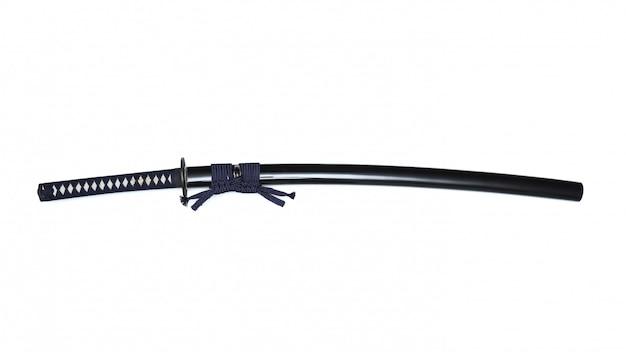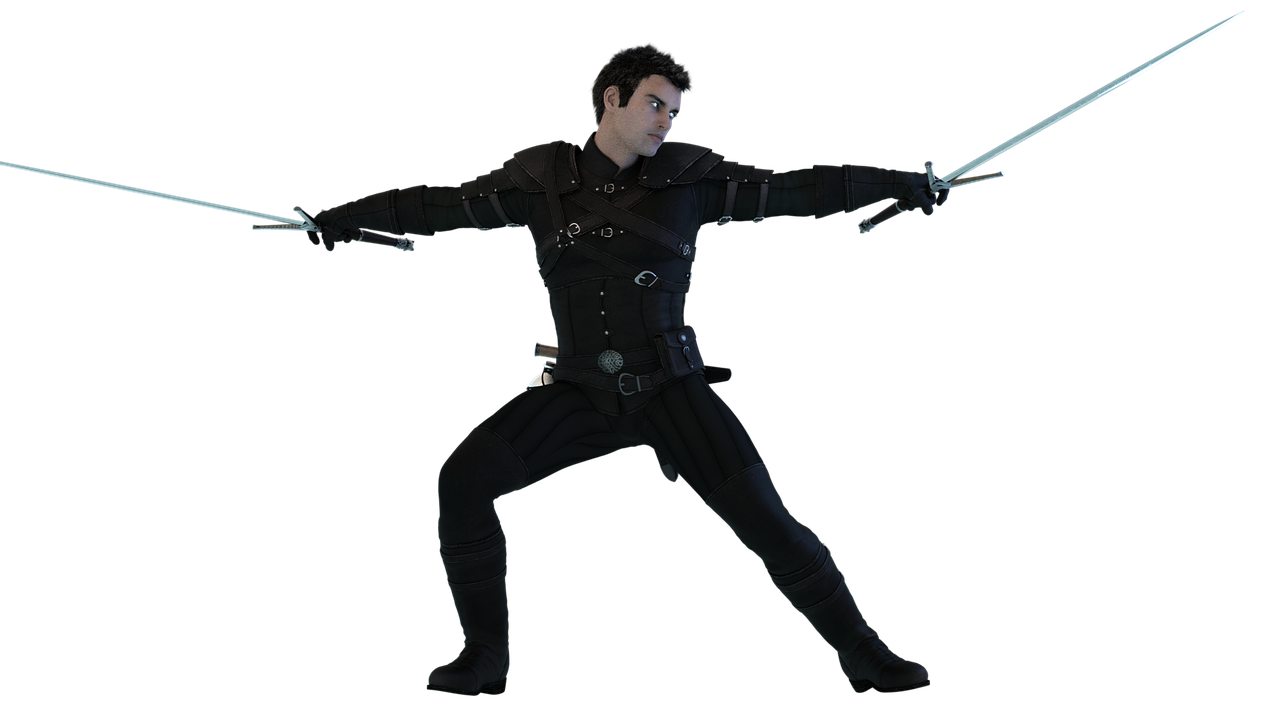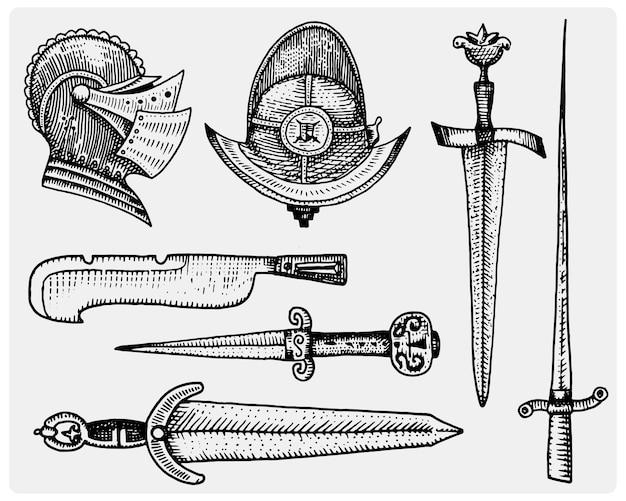Welcome, fellow sword enthusiasts! Have you ever wondered about the intricate design and components that make up a sword? From its elegant hilt to the razor-sharp blade, a sword is a powerful weapon symbolizing bravery and skill. In this blog post, we will delve into the fascinating world of swords and explore their anatomy. Join us as we uncover the secrets held by the sword pommel, delve into the various types of swords, and even take a brief detour to explore the surprising anatomy of a swordfish. So grab your armor and let’s embark on this educational journey together.
Anatomy of a Sword
When it comes to the anatomy of a sword, the blade is, without a doubt, the star of the show. It’s the part we imagine slicing through enemies, dragons, or even watermelons in slow motion. But what exactly makes up a sword’s blade? Let’s dive in and separate fact from fiction.
The Edge: Sharp, but Not Pizza-Slicing Sharp
Contrary to what movies might have you believe, swords weren’t designed to slice through pizza with ease. The edge of a sword, whether it’s a katana or a broadsword, is sharp, but it’s not razor-sharp like a chef’s knife. A sword needs a delicate balance between sharpness and durability to withstand the rigors of battle.
The Point: Poking Holes in Misconceptions
The point of a sword isn’t just for show, nor is it solely for stabbing your opponents. It’s a refined and deadly tool that allows for precision strikes and control in combat. From thrusting through armor gaps to delivering quick jabs, the pointed tip is the unsung hero of a sword’s design.
The Fuller: Functional and Fashionable
Now, let’s talk about the fuller, also known as the blood groove. Contrary to popular belief, this indentation isn’t there to let out the blood of your enemies—it’s there to lighten the weapon while maintaining structural integrity. Plus, let’s face it, it adds a certain fashionable flair to the sword, like the racing stripes on a sports car.
The Hilt: Grabbing a Hold of Victory
The hilt of a sword not only serves as a handle for wielding the weapon but also provides protection and control. It’s where you grip with all your might, ready to face your foes. But what exactly makes up the hilt?
The Guard: More Than Just a Fancy Hand Protector
The guard, sometimes referred to as the crossguard or quillon, isn’t just some fancy decoration—it has a purpose. It helps protect your hand from enemy strikes, providing some added defense in the chaos of battle. Plus, it gives the sword that unmistakable silhouette, making it instantly recognizable.
The Grip: Making Sure You Don’t Lose Your Grip…Literally
Ah, the grip. It’s where your hand forms a steadfast bond with the sword, ensuring you don’t accidentally send it flying into the air and embarrass yourself in front of your enemies. Grips can vary in materials, from leather to wood to even sharkskin (yes, really). Whichever material you choose, just make sure it’s comfortable and allows for maximum control.
The Pommel: The Cherry on Top
Last but not least, we have the pommel. This often overlooked part at the end of the sword serves multiple purposes. It provides balance to the weapon, counteracting the weight of the blade. It also functions as a blunt force instrument, in case you need to deliver an unexpected blow or break someone’s armor.
So there you have it—the anatomy of a sword, from the blade to the hilt. The next time you find yourself wielding a sword, whether in a dream or a lively reenactment, take a moment to appreciate the craftsmanship and ingenuity that goes into each and every detail. And remember, always keep the pizza slicer far, far away.
Sword Pommel: The Unsung Hero of Sword Anatomy
The sword pommel may not be as flashy as the blade or as sharp as the tip, but don’t underestimate its importance in the grand scheme of sword anatomy. Consider it the unsung hero, quietly sitting at the end of the hilt, ensuring a balanced and comfortable grip while adding a touch of personality to the weapon.
The Pommel’s Purpose
At first glance, you might think the pommel is purely decorative, like the cherry on top of a delicious sword sundae. However, its purpose runs deeper than mere aesthetics. The pommel helps to counterbalance the weight of the blade and plays a crucial role in maintaining control and maneuverability during combat.
Form and Function
The pommel comes in various shapes and sizes, depending on the type of sword. From the classic disc-shaped pommel to the more elaborate and decorative versions featuring animal motifs or intricate engravings, the pommel not only serves a practical purpose but also adds an element of style to the overall design.
Ergonomics and Comfort
Imagine gripping a sword with just a bare hilt. Not only would it feel uncomfortable, but it would also be challenging to wield effectively. The pommel provides vital support and stability, preventing the sword from slipping out of your hand while delivering powerful strikes or parrying an opponent’s attack. Think of it as the sword’s ergonomic handshake, ensuring a firm grip and preventing accidents in the heat of battle.
Functionality Meets Style
While the primary function of the pommel is to enhance the sword’s handling, many pommels also exhibit exquisite craftsmanship and artistic flair. Swordsmiths often used the pommel as an opportunity to showcase their skills and create unique designs that reflected the personality or heraldry of the sword’s owner. So, not only does the pommel serve a practical purpose, but it also allows the sword to make a bold and stylish statement on the battlefield.
Pommel Upgrades and Variations
Over time, sword designs evolved, and so too did the pommel. As different combat techniques and fighting styles emerged, swordsmiths tweaked the pommel’s design to meet new demands. Some pommels featured protrusions or spikes to enhance the sword’s versatility, while others incorporated hidden compartments for storing small items such as poison or extra ammunition. These innovative modifications demonstrated the adaptability and creativity of the craftsmen behind these weapons.
Though often overlooked, the sword pommel is a vital component of sword anatomy, contributing to balance, comfort, and control. Its aesthetic value adds personality and style to the weapon, making it both functional and visually appealing. So, let’s raise our swords (carefully, of course) to the unsung hero of sword design – the pommel!
Types of Swords
When it comes to swords, there’s more than meets the eye. These iconic weapons have been wielded by warriors throughout history, each with its own unique features and purpose. In this section, we’ll slice through the details and explore the diverse types of swords that have graced battlefields and captivated imaginations.
1. The Mighty Longsword
The Emperor of Blades
The longsword, often considered the king of swords, reigned supreme in the late medieval and Renaissance periods. With its long and double-edged blade, it became the weapon of choice for knights and swordsmen. Perfect for both cutting and thrusting, the longsword packed a powerful punch, making it a formidable foe in any skirmish.
2. The Sneaky Rapier
A Sword for the Sly
If the longsword is the noble king, then the rapier is the cunning rogue. Originating in the 16th century, this slender and elegant weapon favored finesse over brute force. Its narrow and pointed blade made it ideal for thrusting attacks, allowing the wielder to slip through gaps in armor and strike with precision.
3. The Exotic Scimitar
The Sultan’s Weapon of Choice
Hailing from the Middle East, the scimitar is a curved sword that has captured the imagination of adventurers and storytellers alike. With its distinctive shape and razor-sharp edge, the scimitar is as much a symbol of power as it is a deadly weapon. Often associated with Arabian culture, it conjures up images of desert warriors and swashbuckling heroes.
4. The Mysterious Katana
The Way of the Samurai
No discussion of swords would be complete without mentioning the iconic katana. The traditional Japanese weapon that embodies the soul of the samurai, the katana is revered for its beauty, craftsmanship, and deadly efficiency. With its curved blade, it was designed for swift and precise cutting strikes, making it a lethal companion in the hands of a skilled swordsman.
5. The Legendary Broadsword
Brute Force Unleashed
For those who favor sheer power and imposing size, the broadsword is a force to be reckoned with. With its hefty blade and sturdy hilt, this mighty weapon was favored by knights and warriors who preferred a direct and uncompromising approach on the battlefield. Whether cleaving through armor or striking fear into the hearts of enemies, the broadsword made a bold statement.
From the elegant rapier to the powerful broadsword, each type of sword has its own story to tell. Whether it’s through the finesse of the rapier or the raw strength of the broadsword, these weapons have left an indelible mark on history. So, the next time you pick up a sword, remember the varied shapes and styles it can take, and embrace the spirit of the warrior who once wielded it with skill, strength, and perhaps a touch of panache.
Anatomy of a Swordfish
The most distinctive feature of a swordfish is its long, sword-like rostrum, which gives the fish its iconic name. Just like a knight wielding a deadly weapon, a swordfish dashes through the ocean with its impressive pointed snout, ready to take on anything that crosses its path. This powerful rostrum is not just for show; it’s incredibly useful for hunting and defense. The rostrum is equipped with sharp, tooth-like structures called dermal denticles, making it a formidable tool for striking at prey or warding off potential threats.
Let’s Talk About That Sail
Now, we can’t forget about the swordfish’s unique dorsal fin, also known as a sail. This sail-like fin stretches out along the fish’s back, giving it a regal and majestic appearance. Picture this: a swordfish gracefully gliding through the deep blue waters, its sail catching the sunlight and creating a shimmering spectacle. This striking feature not only adds to the fish’s grace but also serves a practical purpose. The sail helps stabilize the fish as it moves through the water, allowing it to swim swiftly and with precision.
The Magnificent Tail Fin
Ah, the tail fin of a swordfish – a true work of art in the underwater world. With its crescent-shaped design, the tail fin of a swordfish is designed for speed and agility. It propels the fish forward with incredible force, allowing it to swiftly pursue prey or escape from predators. Just imagine witnessing a swordfish in action, its tail fin cutting through the water like a sleek, well-honed blade. It’s a sight to behold!
The All-Seeing Eyes
Let’s not forget about the swordfish’s eyes – large, round orbs that seem to hold the secrets of the ocean depths. These captivating eyes are positioned high on the fish’s head, providing it with excellent vision. Swordfish have the ability to see well in low-light conditions, making them even more formidable hunters. Those eyes scan the surroundings, seeking out any movement that might indicate a potential meal. It’s like they have their own built-in underwater surveillance system!
The Stealthy Underbelly
Underneath its impressive exterior, the swordfish hides a surprisingly strategic feature – its pale underbelly. Unlike the dark blue hue on its back, the swordfish’s belly is light in color. This may seem like a design flaw, but it’s actually a clever adaptation. The light-colored underbelly helps the fish blend in with the bright surface waters when viewed from below, making it harder for predators lurking in the depths to spot them. It’s like the swordfish’s own sneaky camouflage suit!
And There You Have It!
Now that we’ve explored the astonishing anatomy of a swordfish, it’s clear to see why this creature is truly a marvel of nature. From its fearsome rostrum to its majestic sail, every aspect of the swordfish’s body is finely tuned for survival and success. So, the next time you hear about the mighty swordfish, remember the amazing features that make it such a formidable and captivating ocean dweller.
What Are the Different Parts of a Sword Called
When it comes to swords, just wielding them around like a medieval hero won’t cut it. (No pun intended… well, maybe just a little.) To truly appreciate the anatomy of a sword, it’s crucial to know the names of its various parts. So, let’s dive into the world of sword lingo, shall we?
The Blade: Edged Mischief
At the heart of every sword lies the blade, the part that does all the slicing and dicing. Whether it’s a double-edged or single-edged weapon, the blade is the star of the show. Picture a fierce battle, and the blade becomes the protagonist, striking fear into the hearts of enemies… or watermelons at the very least.
Pointy Tip (Point or Foible)
At one end of the blade, there’s a little something called the pointy tip. Don’t let its innocent name fool you; this is where the magic happens. The point, also known as the foible, is the sharp end that bids farewell to your foes and paves the way to victory.
Razor-Sharp Edge (Cutting Edge)
Running along either side of the blade, we have the razor-sharp edge. This is the part that transforms a mere chunk of metal into a weapon worthy of admiration. With a swift slice, the cutting edge turns even the toughest opponent into a humble servant. Well, it’s not called a “cutting” edge for nothing!
The Hilt: The Handle of Power
Now that we’ve acquainted ourselves with the blade, let’s give some love to the hilt. The hilt is where you grip the sword, and it’s much more than just a fancy handle. It’s the connection between you and your trusty weapon, like a handshake that says, “We’re in this together!”
Handle (Grip or Haft)
The handle, also known as the grip or haft, is the part where your hand becomes one with the sword. It’s like a match made in warrior heaven. With an ergonomic design to provide a solid grip, the handle ensures you have complete control over every swing, thrust, or fancy flourish.
Guard (Crossguard)
Imagine a wrestling match between your hand and an enemy blade. Now, picture the guard stepping in and saying, “Hold my sword!” The guard, also called the crossguard, is like a personal bodyguard for your hand. This protective piece keeps unwanted blade-to-hand contact to a minimum, because let’s face it, no one wants their fingers unexpectedly taking a vacation.
Pommel (Butt)
At the end of the handle, we have the pommel, otherwise known as the butt of the sword. No, we’re not talking about the warrior’s behind here; it’s the rounded weight at the bottom of the handle. The pommel isn’t just for aesthetic appeal; it helps with balance and stability, making your swings more precise and powerful. Think of it as the secret weapon that adds that extra oomph to your strikes.
Now that we’ve explored the secret language of swords, you’re armed with the knowledge to appreciate these weapons on a whole new level. So, next time you encounter a sword, impress your friends with your newfound expertise. And remember, with great sword knowledge comes great… sword knowledge!



